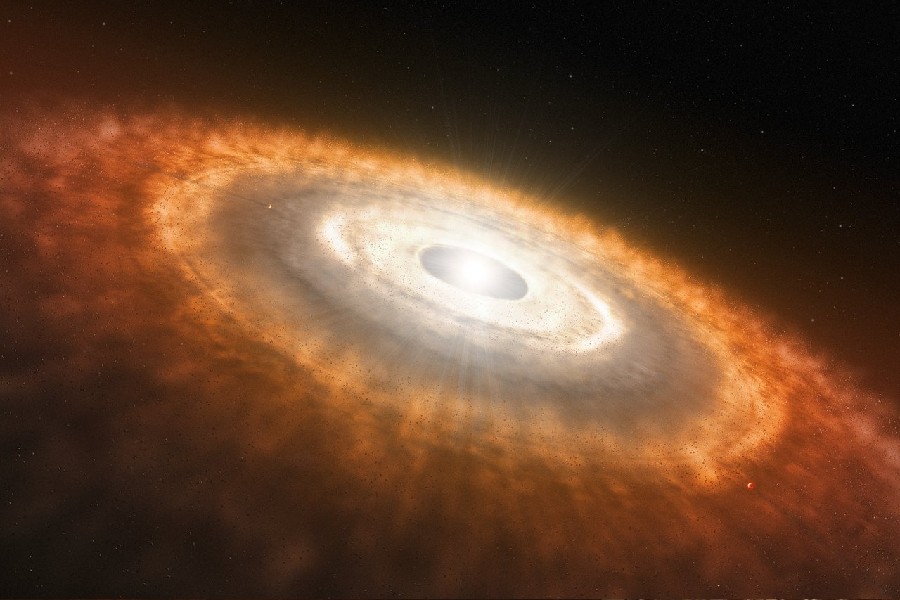Our galaxy teems with billions of planets beyond our Solar System – called exoplanets. These worlds challenge assumptions with their unfamiliar properties and extreme nature. But what are some of the most fascinating facts about exoplanets? Why are exoplanets important?
We will explore the fascinating world of exoplanets in this article, highlighting significant discoveries that have broadened our understanding of the cosmos. From colossal Super Jupiters to solitary icy wanderers, we’ll delve into key facts, providing insights into their abundance, varied sizes, and orbital landscapes.

Fascinating Facts About Exoplanets
Exoplanets display incredible diversity. They range from Super Jupiters, which are more than 10 times the mass of our largest gas giant, to Earth-sized planets and smaller super-Earths. This diversity raises questions about the potential habitability of these distant worlds.
Some exoplanets are exotic diamond worlds made mostly of carbon. Others are hellish “lava planets” or scorching “hot Jupiters” with tightly orbiting paths.
Additionally, rogue exoplanets have been found drifting through space without any central star. The variety of these distant planets continues to captivate scientists and enthusiasts alike.
First Exoplanet to be Detected
In 1995, Swiss astronomer Michel Mayor and his colleague made a groundbreaking discovery – they detected the first exoplanet orbiting a Sun-like star. This newfound planet, named 51 Pegasi b, defied expectations by completing its orbit around its host star in a mere four days, earning the classification of a hot Jupiter.
The Mayor’s discovery marked a pivotal moment, providing concrete evidence of planets existing beyond our Solar System. Since then, the cosmic map has been steadily filling up, boasting over 5,000 diverse exoplanets.
This exponential growth in our knowledge of exoplanets is partly owed to spacecraft like NASA’s Kepler, which uses transit dimming to uncover thousands of potential exoplanet candidates. The realm of exoplanet exploration continues to expand, fueled by ongoing discoveries and technological advancements.
Exoplanet Diversity Galore
Unlike the rocky and gaseous planets nearby, exoplanets come in various sizes, some even smaller than the Moon. Their orbits exhibit incredible diversity, ranging from just a few hours to thousands of years, featuring peculiar oval trajectories and more – with much remaining undiscovered.
The composition of these exoplanets plays a crucial role in determining factors such as density, temperature, atmosphere, and the potential for liquid water, which is essential for the existence of life. Whether orbiting close or far from their stars, these exoplanets give rise to vastly different worlds.
For instance, in the same Solar System, one may encounter baked lava planets close to their stars, while others, situated at a distance, resemble icy ocean moons. The uniqueness of each exoplanet is remarkable, with no two being exactly alike.
Alien Weather Wonders
Exoplanets exhibit unique weather, far removed from Earth’s familiar patterns. Some have scorching ruby clouds, blue crystalline rain, and massive vortex storms driven by powerful winds. Others feature atmospheres with snow-like metal flakes or clouds spiked with sapphire crystals.
Astronomers delve into studying these exotic exoplanet weather patterns, extending beyond the typical wind, rain, and snow observed on Earth. The considerable climate variations arise from differences in planet composition and exposure levels to sunlight.
On nightsides, freezing occurs, and shock waves can transmit through upper atmospheres, sparking mesmerizing plasma glows. The proximity of exoplanets to their host stars also plays a crucial role in shaping vastly diverse weather dynamics.
Studying weather on exoplanets
Analyzing an exoplanet’s atmosphere’s behavior is crucial for evaluating its potential habitability and overall composition. By monitoring weather phenomena such as shifting wind jets and global dust storms on these distant planets, scientists can uncover essential details about the planet’s evolution.
Tracking fluctuations in brightness helps scientists explore the patchiness of clouds on exoplanets. Comparing temperature differences between day and night provides insights into the efficiency of heat circulation and the warmth generated from the planet’s internal core.
Studying weather patterns on exoplanets reveals valuable information about their internal structures and contributes to our understanding of planetary systems far beyond our Solar System. This research sheds light on the diverse architectures of distant planetary systems, expanding our knowledge beyond.

Extreme Exoplanetary Environments
In our vast universe, various peculiar exoplanets showcase extraordinary characteristics not found in our Solar System. Take Gliese 436 b, for instance.
This unique world teeters on the edge, experiencing scorching heat and bitter cold as it moves through its eccentric orbit. Some exoplanets even revolve around lifeless remnants of stars or navigate the complexities of orbiting multiple stars in a chaotic dance.
Studying unusual planets that may be less likely to support life helps scientists understand more about how planets form and the variety of objects in space. This exploration happens over long periods or in extreme conditions.
Exotic Moons and Their Mysteries
Undiscovered officially, exomoons may exist, supported by mounting evidence. Odd transit timing variations in giant exoplanet host stars hint at the potential presence of large moons exerting gravitational tugs.
Icy exomoons, possibly featuring tidal heating or magnetic fields, might house liquid interiors beneath frozen surfaces. These shielded subsurface oceans could foster early biochemical reactions, sparking life forms—similar to terrestrial biology or unique alien biochemistries developing independently.
Certain frigid exoworlds, bombarded by intense surface radiation, could hide havens for life below the surface. Well-insulated aquatic sanctuaries might provide a refuge, shielding life forms from the harsh conditions on the surface.
Exploring these environments concealed beneath frozen crusts in distant orbital systems could uncover revelations about extraterrestrial organisms. These organisms might be waiting to be discovered.
Detective Telescopes and Space Missions
Early indirect methods revealed exoplanets, and telescopes evolved to use spectroscopy, uncovering details about their atmospheres. Space photometry missions, such as Kepler, found thousands of candidates by detecting transits. Upcoming observatories aimed to capture images of potentially habitable Earth-sized worlds.
Furthermore, instruments such as HARPS precisely measure star wobbles, providing evidence of orbiting planets. Hubble goes further by analyzing starlight passing through exoplanet atmospheres. Also, satellite photometers play a role in pinpointing additional candidates by studying light curves.
The ongoing efforts in exoplanet discovery pave the way for future missions. Giant ground and space telescopes, equipped with advanced technologies, will further expand our gallery of exoplanets. This technological progression allows us to gain valuable insights into the characteristics of these intriguing worlds.
Current and future exoplanet missions
The Transiting Exoplanet Survey Satellite (TESS) is currently surveying nearby star systems. It searches for light curve dips that may indicate the presence of possible planets.
The James Webb Space Telescope (JWST) or other future telescopes could then conduct follow-up atmospheric analysis on promising exoplanet candidates pinpointed by TESS. Additionally, the upcoming Nancy Grace Roman Space Telescope will conduct wide-field expeditions hunting for exoplanets.
Conclusion
We conclude our journey about the intriguing facts about exoplanets. We explored how detections have unveiled an incredible diversity of sizes, orbits, and weather beyond imagination.
Studying the mysteries of exomoons and probing extreme exoplanet environments has stretched researchers past Solar System assumptions. While thousands of validated planets exist, facts about exoplanets will exponentially explode as next-generation telescopes come into operation.
We hope reviewing this frontier science has awakened wonder at the hidden possibilities manifesting under different star systems. As exoplanets facts overflow established models, a new cosmos emerges that we have only begun to grasp.
